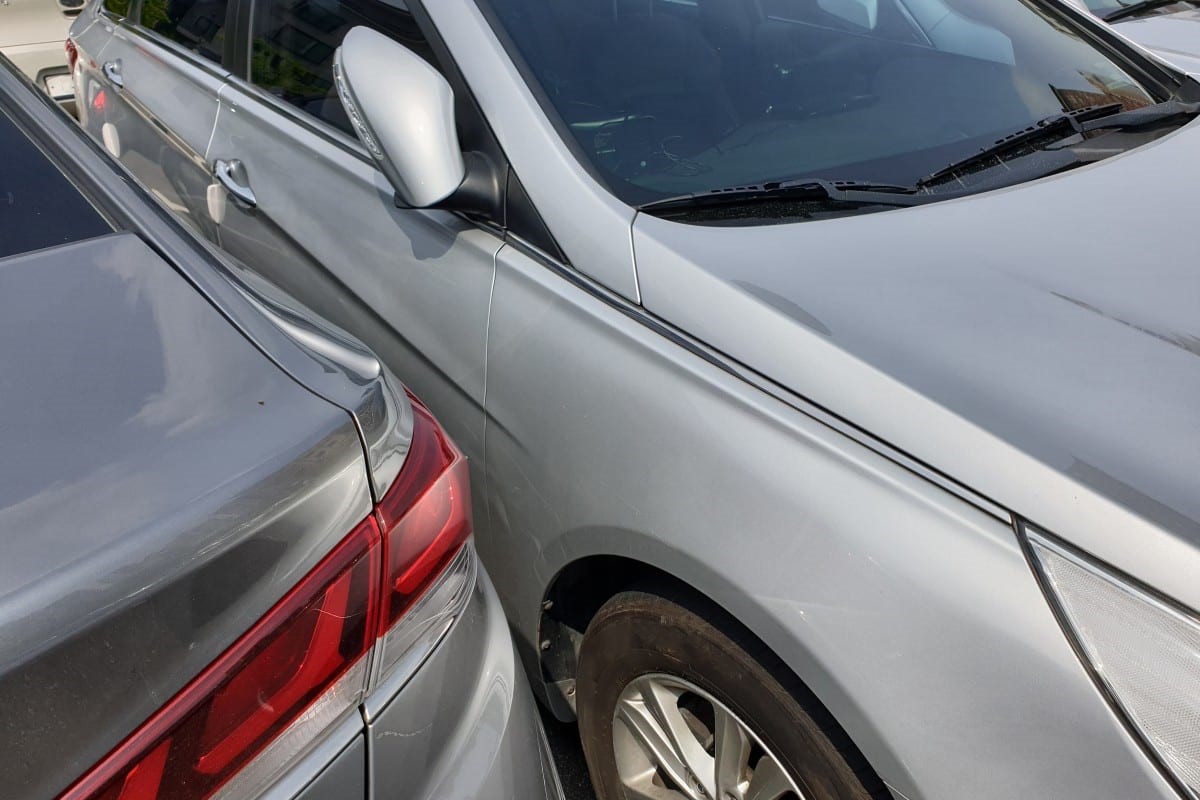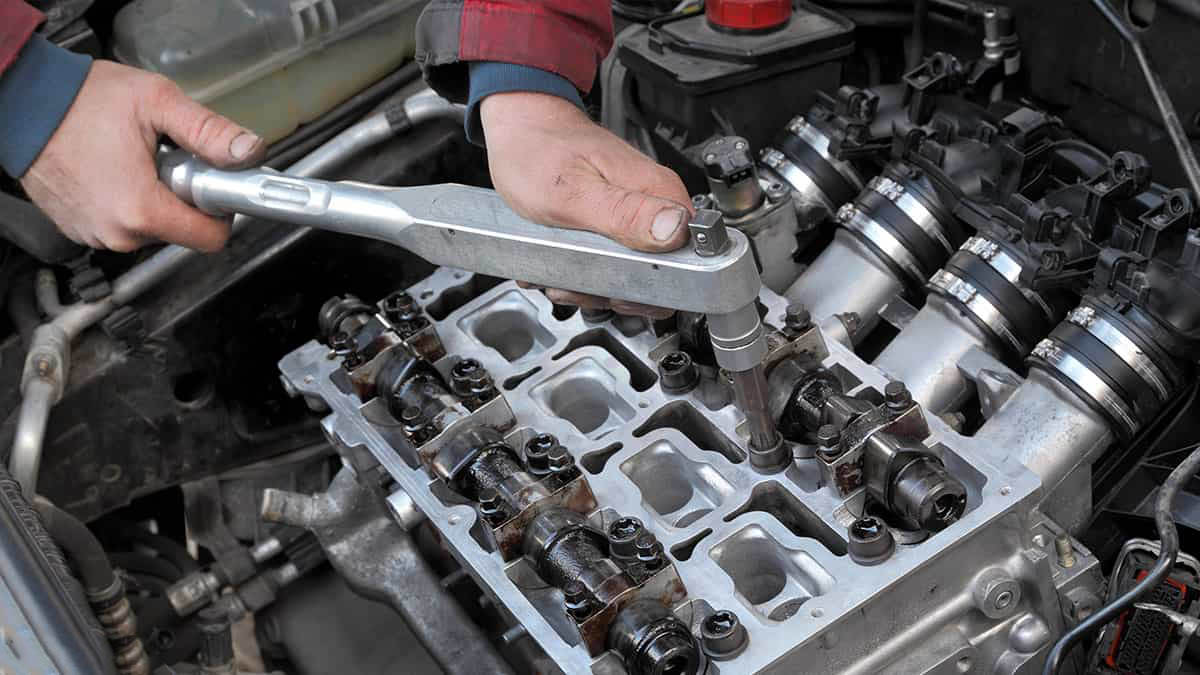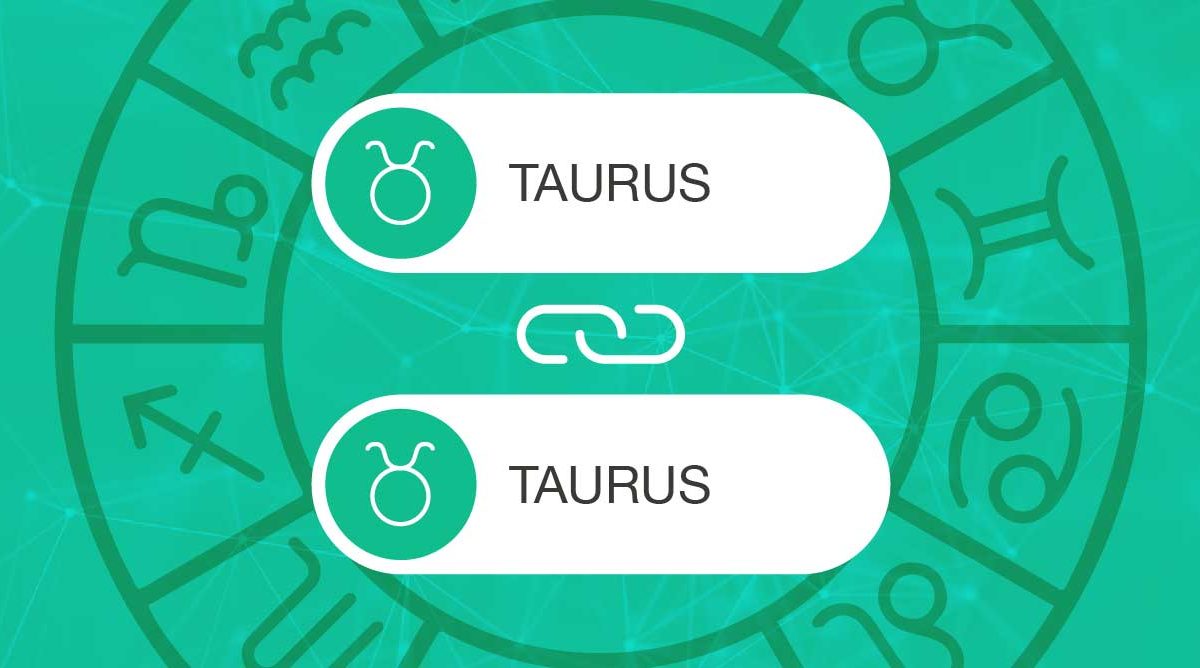Home>Automotive>The Ultimate Guide To Determining Fault In A Sideswipe Accident


Automotive
The Ultimate Guide To Determining Fault In A Sideswipe Accident
Published: January 20, 2024
Learn how to determine fault in a sideswipe accident with our comprehensive guide. Get expert advice on navigating automotive insurance claims and legal proceedings.
(Many of the links in this article redirect to a specific reviewed product. Your purchase of these products through affiliate links helps to generate commission for Noodls.com, at no extra cost. Learn more)
Table of Contents
Introduction
Sideswipe accidents can be distressing and confusing experiences for those involved. These collisions occur when the sides of two parallel vehicles come into contact, often resulting in damage and potential injuries. Determining fault in such incidents is crucial for insurance claims and legal proceedings. Understanding the complexities of assigning fault in sideswipe accidents is essential for all motorists.
In this comprehensive guide, we will delve into the intricate details involved in determining fault in sideswipe accidents. By exploring the various factors, evidence, and legal considerations, we aim to provide a clear understanding of this often challenging process. From analyzing damage and physical evidence to reviewing traffic laws and regulations, we will cover all the essential aspects that come into play when establishing fault in sideswipe accidents.
By the end of this guide, readers will have a solid grasp of the steps and considerations involved in determining fault in sideswipe accidents. Whether you are a driver seeking clarity after being involved in such an incident or simply interested in understanding the complexities of these collisions, this guide is designed to equip you with the knowledge needed to navigate the aftermath of a sideswipe accident effectively.
Let's dive into the intricacies of sideswipe accidents and unravel the key factors that play a pivotal role in determining fault in these challenging scenarios.
Understanding Sideswipe Accidents
Sideswipe accidents are a common type of collision that occurs when the sides of two parallel vehicles come into contact. These incidents typically happen when one vehicle drifts out of its lane and makes contact with another vehicle traveling alongside it. Sideswipe accidents can occur on multi-lane roads, highways, or during lane changes. They can be caused by various factors, including distracted driving, blind spots, sudden lane changes, or failure to check mirrors and blind spots before maneuvering.
The dynamics of sideswipe accidents can be complex. In some cases, both drivers may be unaware of the impending collision until the impact occurs, leading to confusion about fault and liability. Due to the nature of these collisions, determining fault can be challenging, as it often involves assessing the actions of both drivers leading up to the accident.
One of the key characteristics of sideswipe accidents is the potential for significant damage to the vehicles involved. The impact can result in scratches, dents, and, in severe cases, structural damage. Additionally, sideswipe accidents can cause the vehicles to lose control, potentially leading to secondary collisions or spinouts.
Understanding the nuances of sideswipe accidents is essential for all motorists. By recognizing the common causes and potential consequences of these collisions, drivers can take proactive measures to minimize the risk of being involved in such incidents. Moreover, having a thorough understanding of sideswipe accidents can aid in effectively navigating the aftermath of a collision, including the process of determining fault and seeking appropriate recourse.
As we delve deeper into the complexities of determining fault in sideswipe accidents, it is crucial to grasp the intricacies of these collisions and the various factors that come into play. By gaining insight into the nature of sideswipe accidents, individuals can better equip themselves to handle such situations with clarity and confidence.
Factors to Consider in Determining Fault
When determining fault in sideswipe accidents, several critical factors come into play. Understanding these factors is essential for effectively assessing the responsibility of each driver involved. By carefully considering the following elements, a clearer picture of fault can be established:
-
Lane Position and Movement: The position of each vehicle in their respective lanes leading up to the collision is a crucial factor. Determining whether one vehicle drifted out of its lane or if both vehicles made simultaneous lane changes can provide valuable insight into the sequence of events.
-
Turn Signal Usage: The use of turn signals, or lack thereof, can significantly impact fault determination. If one driver failed to signal a lane change or turn, it could indicate a lack of caution and awareness, potentially contributing to the collision.
-
Speed and Acceleration: Assessing the speed and acceleration of each vehicle at the time of the collision is vital. If one vehicle was traveling at an excessive speed or abruptly accelerated, it could influence fault assignment, especially if such actions contributed to the collision.
-
Driver Awareness and Reaction: Evaluating the awareness and reaction of each driver leading up to the collision is essential. Factors such as distracted driving, failure to check mirrors and blind spots, or delayed reactions can all play a significant role in determining fault.
-
Road Conditions and Environmental Factors: The prevailing road conditions and environmental factors, such as weather and visibility, must be taken into account. Poor weather conditions or limited visibility can impact the ability of drivers to maneuver safely, potentially influencing fault determination.
-
Witness Testimony: Gathering testimony from witnesses who observed the events leading up to the collision can provide invaluable perspective. Witness statements can corroborate or challenge the accounts of the drivers involved, offering additional insight into fault determination.
-
Traffic Laws and Regulations: A comprehensive review of applicable traffic laws and regulations is essential. Understanding the specific rules related to lane changes, signaling, and right-of-way can help in assessing whether any violations contributed to the collision.
-
Vehicle Damage and Trajectory Analysis: Analyzing the pattern of damage on the vehicles and the trajectory of the collision can offer valuable clues. This analysis can help reconstruct the sequence of events and determine the actions of each driver leading up to the impact.
By carefully considering these factors in the aftermath of a sideswipe accident, insurance adjusters, legal professionals, and relevant authorities can work towards establishing a clear understanding of fault and liability. Each factor contributes to the intricate tapestry of events that culminate in a sideswipe collision, and a thorough examination of these elements is essential for a fair and accurate determination of fault.
Gathering Evidence
Gathering compelling evidence is a pivotal aspect of the process of determining fault in sideswipe accidents. The evidence collected serves as the foundation for assessing the sequence of events leading up to the collision and plays a crucial role in establishing liability. From physical evidence to witness statements, a comprehensive array of evidence is essential in unraveling the complexities of sideswipe accidents.
One of the primary forms of evidence in sideswipe accidents is the physical damage sustained by the vehicles involved. Scratches, dents, paint transfer, and other forms of damage can provide crucial insights into the dynamics of the collision. By meticulously examining the pattern and extent of the damage, experts can reconstruct the sequence of events and determine the actions of each driver leading up to the impact.
In addition to vehicle damage, physical evidence such as tire marks, debris, and the positioning of the vehicles post-collision can offer valuable clues. These elements can aid in reconstructing the trajectory of the vehicles and identifying any evasive maneuvers or abrupt lane changes that may have occurred. Furthermore, documenting the location and condition of road markings and signage can provide context regarding the prevailing road conditions at the time of the collision.
Witness statements and testimony also form a critical part of the evidence-gathering process. Gathering firsthand accounts from individuals who witnessed the events leading up to the collision can offer invaluable perspectives. Witness testimony can corroborate or challenge the accounts of the drivers involved, providing additional layers of insight into fault determination. It is essential to record witness statements promptly to capture accurate recollections of the events while they are still fresh in the witnesses' minds.
Moreover, technological advancements have introduced new forms of evidence gathering, such as dashboard camera footage and surveillance recordings from nearby establishments. These visual records can offer a clear depiction of the events leading up to the collision, providing an unbiased perspective on the actions of the drivers involved.
By meticulously collecting and analyzing a diverse range of evidence, including vehicle damage, physical clues, witness testimony, and technological records, the process of determining fault in sideswipe accidents can be approached with thoroughness and precision. Each piece of evidence contributes to the intricate puzzle of fault determination, guiding insurance adjusters, legal professionals, and relevant authorities towards a comprehensive understanding of the events that transpired during the sideswipe collision.
Witness Statements and Testimony
Gathering witness statements and testimony is a crucial aspect of the evidence-gathering process in determining fault in sideswipe accidents. The firsthand accounts of individuals who observed the events leading up to the collision provide invaluable perspectives that can significantly influence fault determination.
When collecting witness statements, it is essential to prioritize prompt and thorough documentation. Capturing accurate recollections of the events while they are still fresh in the witnesses' minds is crucial for preserving the authenticity and reliability of their testimonies. Additionally, obtaining multiple witness statements, when available, can offer a more comprehensive understanding of the sequence of events, as it allows for the comparison and corroboration of different perspectives.
Witness testimony serves to provide additional layers of insight into fault determination. By recounting their observations leading up to the collision, witnesses can offer critical details regarding the actions and behaviors of the drivers involved. This can include essential information such as the positioning of the vehicles, the use of turn signals, the speed and acceleration of the vehicles, and any abrupt lane changes or evasive maneuvers.
Furthermore, witness statements can help corroborate or challenge the accounts provided by the drivers involved. Discrepancies or consistencies in the testimonies of witnesses and drivers can serve as pivotal points of consideration when establishing the sequence of events and attributing fault.
In cases where legal proceedings or insurance claims are involved, witness testimony can hold significant weight in supporting or contesting the narratives presented by the parties involved. The credibility and reliability of witness statements can play a decisive role in shaping the outcome of fault determination, making the collection and documentation of such testimony a critical step in the process.
In recent years, technological advancements have introduced new avenues for capturing witness testimony, such as through the use of smartphones and recording devices. This has facilitated the prompt recording of witness statements, ensuring that crucial details are captured accurately and efficiently.
By prioritizing the collection and documentation of witness statements and testimony, the process of determining fault in sideswipe accidents can benefit from a more comprehensive and nuanced understanding of the events that transpired. The insights provided by witnesses serve to enrich the evidence pool, guiding the efforts of insurance adjusters, legal professionals, and relevant authorities towards a thorough and fair assessment of fault and liability.
Analyzing Damage and Physical Evidence
Analyzing the damage sustained by the vehicles involved in a sideswipe accident is a critical aspect of determining fault. The examination of physical evidence offers valuable insights into the dynamics of the collision, aiding in the reconstruction of the sequence of events leading up to the impact.
Scratches, dents, and paint transfer patterns on the vehicles can provide crucial clues regarding the point of impact and the relative positioning of the vehicles at the time of the collision. By meticulously assessing the pattern and extent of the damage, experts can discern the direction of the impacting force and infer the actions of each driver leading up to the collision. Additionally, the presence of paint or material transfer from one vehicle to another can help establish the point of contact, shedding light on the specific movements and trajectories of the vehicles involved.
In cases where severe structural damage has occurred, such as crumpling of body panels or deformation of vehicle components, the analysis of such damage can offer insights into the intensity of the impact and the angles at which the vehicles came into contact. This information is instrumental in reconstructing the sequence of events and understanding the dynamics of the collision.
Furthermore, examining the positioning of the vehicles post-collision, including any potential spinouts or changes in orientation, can provide critical clues regarding the sequence of events. This analysis aids in determining whether abrupt lane changes, evasive maneuvers, or loss of control occurred, contributing to the collision.
Beyond the vehicles themselves, physical evidence such as tire marks, debris, and the positioning of road markings can offer valuable context. Tire marks can indicate sudden braking or swerving, providing insights into the evasive actions taken by the drivers. Additionally, the presence and distribution of debris at the collision site can offer clues regarding the movements and trajectories of the vehicles leading up to the impact.
By meticulously analyzing the physical evidence, from vehicle damage to environmental clues, a comprehensive understanding of the sequence of events in a sideswipe accident can be achieved. This detailed analysis forms a cornerstone in the process of determining fault, guiding insurance adjusters, legal professionals, and relevant authorities towards a thorough and accurate assessment of liability.
Reviewing Traffic Laws and Regulations
Reviewing traffic laws and regulations is a crucial step in the process of determining fault in sideswipe accidents. Understanding the specific rules and guidelines governing lane changes, signaling, and right-of-way is essential for assessing the conduct of the drivers involved. By conducting a comprehensive review of applicable traffic laws, insurance adjusters, legal professionals, and relevant authorities can gain valuable insights into the adherence to established regulations and the potential presence of violations contributing to the collision.
One of the fundamental aspects of reviewing traffic laws and regulations involves examining the rules pertaining to lane changes. Most jurisdictions have specific laws outlining the proper procedures for changing lanes, including the requirement to signal intentions and yield to other vehicles when merging into adjacent lanes. Assessing whether these regulations were followed by the drivers involved in the sideswipe accident is essential for determining fault. Failure to adhere to lane change regulations can significantly impact liability, especially if such actions directly contributed to the collision.
In addition to lane change regulations, the review of signaling requirements is paramount. Traffic laws typically mandate the use of turn signals to indicate lane changes or turns. The absence of proper signaling can indicate a lack of caution and awareness, potentially influencing fault determination. By scrutinizing the adherence to signaling regulations, a clearer understanding of the drivers' intentions and behaviors leading up to the collision can be established.
Furthermore, the examination of right-of-way regulations is integral to the fault determination process. Understanding the specific rules governing the yielding of right-of-way in various driving scenarios is essential for assessing the actions of the drivers involved in the sideswipe accident. Violations of right-of-way regulations can significantly impact liability, especially if the failure to yield contributed to the collision.
By meticulously reviewing traffic laws and regulations, a comprehensive understanding of the adherence to established rules and the potential presence of violations can be attained. This knowledge serves as a critical foundation for fault determination, guiding the efforts of insurance adjusters, legal professionals, and relevant authorities towards a fair and accurate assessment of liability in sideswipe accidents.
Utilizing Accident Reconstruction Experts
Utilizing the expertise of accident reconstruction professionals is a pivotal strategy in the process of determining fault in sideswipe accidents. These specialists possess the knowledge, skills, and tools necessary to meticulously analyze the sequence of events leading up to a collision, offering invaluable insights that contribute to a comprehensive understanding of fault and liability.
Accident reconstruction experts employ a multidisciplinary approach, drawing upon principles of physics, engineering, and forensics to reconstruct the dynamics of a sideswipe accident. By examining a diverse range of evidence, including vehicle damage, physical clues, witness testimony, and environmental factors, these professionals can piece together the intricate puzzle of the collision, unraveling the specific actions and behaviors of the drivers involved.
One of the primary tasks of accident reconstruction experts is to analyze the pattern and extent of the damage sustained by the vehicles. Through meticulous assessment of scratches, dents, paint transfer, and structural deformation, these specialists can infer the directions of impact and the relative positions of the vehicles at the time of the collision. This analysis aids in reconstructing the sequence of events, shedding light on the actions and maneuvers of each driver leading up to the impact.
Furthermore, accident reconstruction experts leverage advanced tools and techniques to simulate the movements and trajectories of the vehicles involved. Using computer-aided simulations and mathematical models, these professionals can recreate the events leading up to the collision, providing a visual representation of the sequence of actions and the dynamics of the impact. This simulation-based approach offers a comprehensive understanding of the collision, aiding in the determination of fault and liability.
In cases where legal proceedings or insurance claims are involved, the insights provided by accident reconstruction experts hold significant weight in supporting or contesting the narratives presented by the parties involved. Their findings and expert testimony serve to enrich the evidence pool, offering a meticulous and scientific perspective on the sequence of events, thereby guiding the efforts of insurance adjusters, legal professionals, and relevant authorities towards a thorough and fair assessment of fault and liability.
By harnessing the expertise of accident reconstruction professionals, the process of determining fault in sideswipe accidents benefits from a rigorous and scientific approach, ensuring that fault and liability are established with precision and accuracy.
Insurance and Legal Considerations
In sideswipe accidents, navigating the realm of insurance claims and legal considerations is a crucial aspect of the aftermath. Understanding the implications of fault determination on insurance coverage and potential legal proceedings is essential for all parties involved.
Insurance companies play a pivotal role in the resolution of sideswipe accidents. Once fault is determined, the respective insurance providers of the involved drivers assess the liability and coverage aspects of the collision. The determination of fault directly influences the allocation of responsibility and the extent of coverage provided by the insurance policies. If one driver is deemed entirely at fault, their insurance may be responsible for covering the damages and injuries sustained by the other party. Conversely, if fault is determined to be shared, the insurance providers may engage in a process of proportional liability assessment, where each party's coverage contributes to the resolution of the claims.
Legal considerations also come into play in the aftermath of sideswipe accidents. If fault determination becomes a point of contention between the parties involved, legal proceedings may ensue. Disputes regarding fault and liability can lead to litigation, where the evidence, testimonies, and expert analyses are presented in a court of law. The determination of fault holds significant weight in legal proceedings, as it directly impacts the outcomes of the case, including the allocation of damages and the resolution of disputes.
Moreover, the implications of fault determination extend to the potential impact on the driving records and insurance premiums of the involved parties. A determination of fault against a driver can result in points being added to their driving record, potentially leading to increased insurance premiums. Understanding the long-term ramifications of fault determination is essential for drivers involved in sideswipe accidents, as it can influence their future insurance coverage and driving privileges.
In light of these considerations, the process of determining fault in sideswipe accidents holds far-reaching implications for insurance coverage and legal proceedings. It is imperative for all parties involved to be cognizant of the potential outcomes and to engage in the process with clarity and diligence to ensure a fair and equitable resolution.
Conclusion
In conclusion, the determination of fault in sideswipe accidents is a multifaceted and intricate process that demands a comprehensive understanding of the various factors, evidence, and legal considerations at play. Sideswipe accidents, characterized by the contact between the sides of two parallel vehicles, present unique challenges when it comes to establishing fault and liability. Factors such as lane position, turn signal usage, speed, driver awareness, road conditions, and witness testimony all contribute to the complexities of fault determination.
Gathering compelling evidence, including the analysis of vehicle damage, physical clues, and witness statements, serves as the foundation for a thorough assessment of fault. Additionally, the review of traffic laws and regulations provides valuable insights into the adherence to established rules and the potential presence of violations contributing to the collision.
The utilization of accident reconstruction experts further enriches the fault determination process, offering a meticulous and scientific perspective on the sequence of events leading up to the collision. Their expertise in analyzing the dynamics of the accident aids in unraveling the specific actions and behaviors of the drivers involved, contributing to a comprehensive understanding of fault and liability.
The implications of fault determination extend to insurance coverage, legal proceedings, and the potential impact on driving records and insurance premiums. Understanding these implications is crucial for all parties involved, as they directly influence the outcomes of insurance claims, legal disputes, and future driving privileges.
In the aftermath of a sideswipe accident, the process of determining fault requires diligence, precision, and a commitment to fairness. By carefully considering the intricate details and engaging with the evidence and expertise available, a clear and equitable assessment of fault can be achieved. Ultimately, the goal of fault determination in sideswipe accidents is to ensure a just resolution that accurately reflects the sequence of events and allocates responsibility in a fair and transparent manner.













